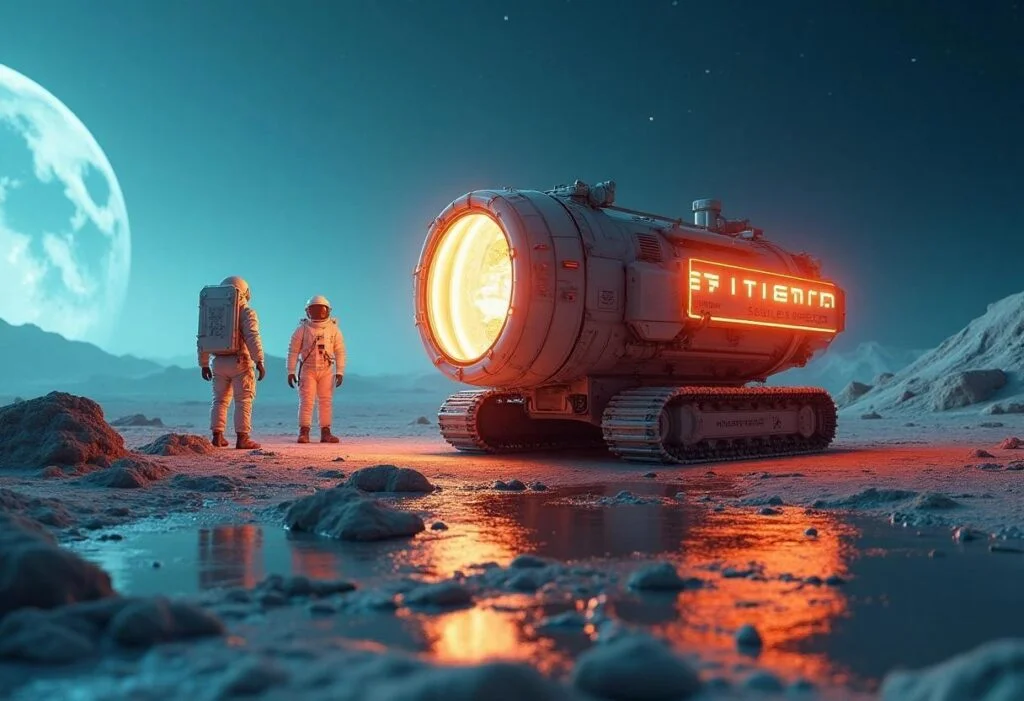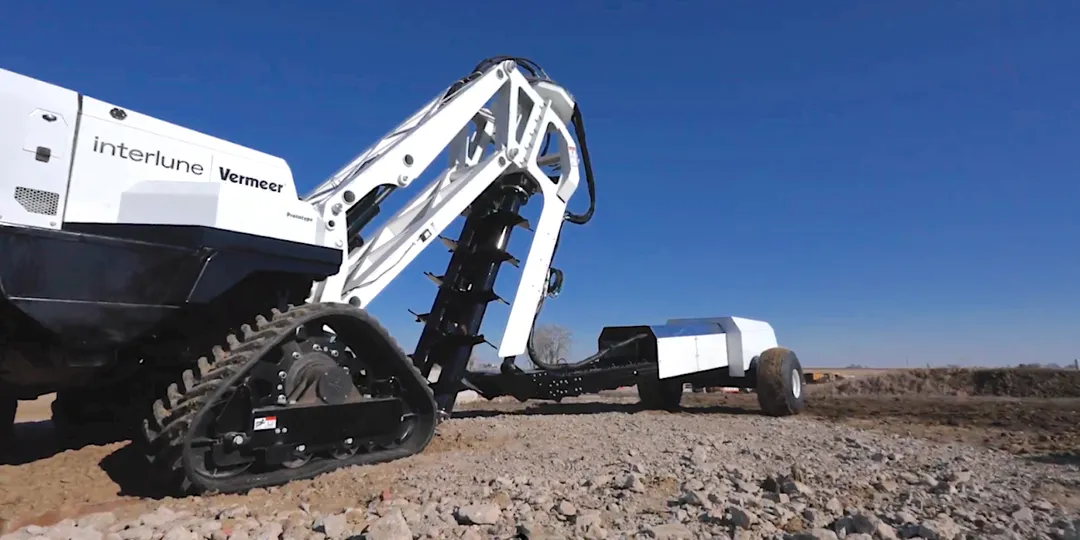
Lunar Helium Rush: Vermeer and Komatsu Gear Up for Moon Mining Excavator Race
A new space race is underway, but this one isn't about reaching the moon – it's about mining it. Fueling this competition is the growing demand for helium, a critical element in the production of semiconductors, chips, and optics. With Earth's helium reserves dwindling, companies are turning their gaze towards the lunar surface, sparking a surge in lunar mining technology and innovation.

Vermeer, the Iowa-based equipment manufacturer, has unveiled a prototype of its Interlune excavator. This machine is designed to process a staggering 100 metric tons of lunar rocks and dirt per hour, extracting the valuable helium-3 isotope. Interlune is funded by grants from the US Department of Energy and NASA TechFlights and aim for their first mission to the Moon before 2030.
"When you're operating equipment on the Moon, reliability and performance standards are at a new level," said Rob Meyerson, Interlune CEO. "Vermeer has a legacy of innovation and excellence that started more than 75 years ago, which makes them the ideal partner for Interlune."
But Vermeer isn't alone in this endeavor. Japan's construction giant, Komatsu, announced similar plans back in 2023 and showcased a scaled prototype of its fully electric lunar excavator at the 2025 Consumer Electronics Show (CES) in Las Vegas.

Komatsu recognized the need for electrically powered machines due to the lack of oxygen on the moon, and are emphasizing the challenge posed by the moon's extreme temperature fluctuations.
Despite Komatsu’s early announcement, Vermeer appears to be making significant strides in machine development and extraction potential according to Gary Lai, Interlune co-founder and CTO stated. “The high-rate excavation needed to harvest helium-3 from the Moon in large quantities has never been attempted before, let alone with high efficiency,”

Interlune envisions a four-step system: excavate, sort, extract, and separate, with excavation being the first critical phase. Vermeer is also being recognized as the manufacturer of the “Coolest Thing Made in Iowa” with its ZR5-1200 self-propelled hay baler, Vermeer CEO Jason Andringa will join the Interlune advisory board.
Helium-3, deposited into lunar dirt by solar winds, holds immense potential. Valued at approximately $20 million per kilogram, it is crucial for achieving the extreme cold required in superconducting quantum computing. SpaceNews.com notes its potential use in long-dreamed-of nuclear fusion reactors, medical imaging, and radiation detection.

While the prospect of lunar helium mining is exciting, challenges remain. Ian Crawford, professor of planetary science and astrobiology at Birkbeck, University of London, pointed out in 2021 that the significant investment in infrastructure for mining, extraction, and transportation could initially make terrestrial energy sources more cost-effective.
Whether it's Vermeer's high-tech excavator or Komatsu's electric solution, the race to extract helium-3 from the moon is heating up. Will lunar mining become a reality within the next decade? And will it truly solve Earth's helium shortage? The future of lunar mining and its impact on technology remain fascinating questions to ponder. Share your thoughts in the comments below!